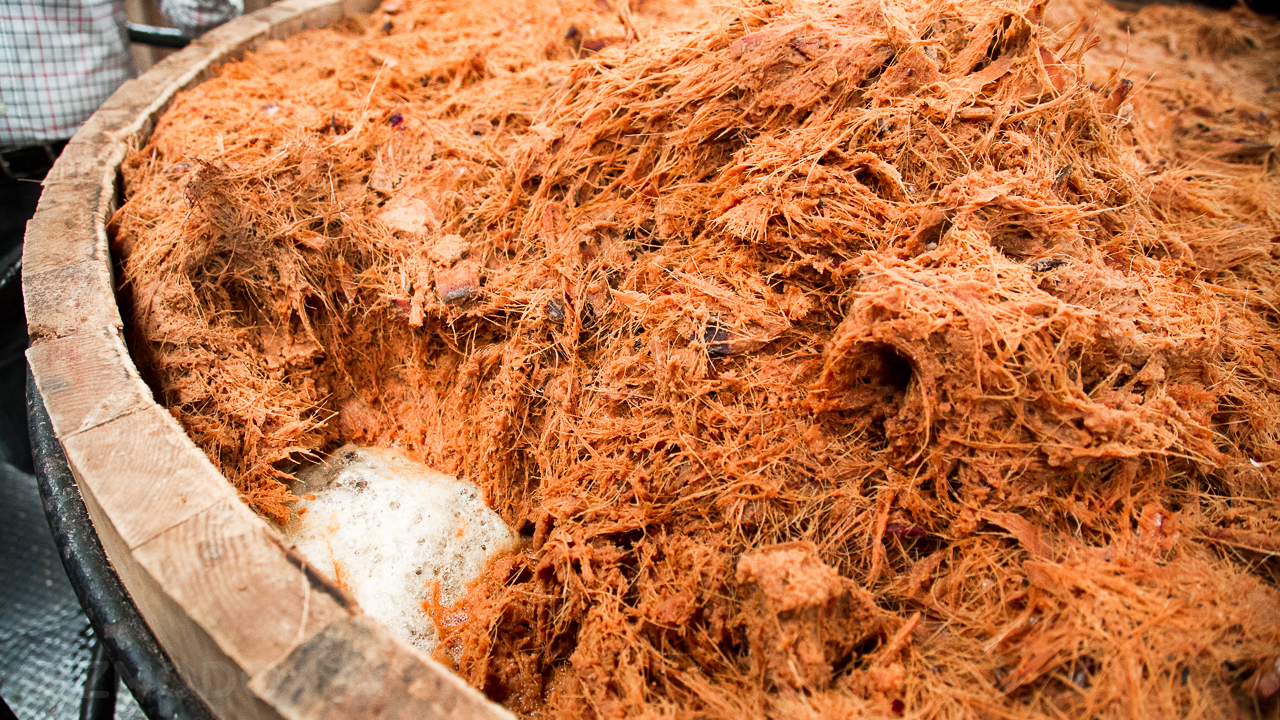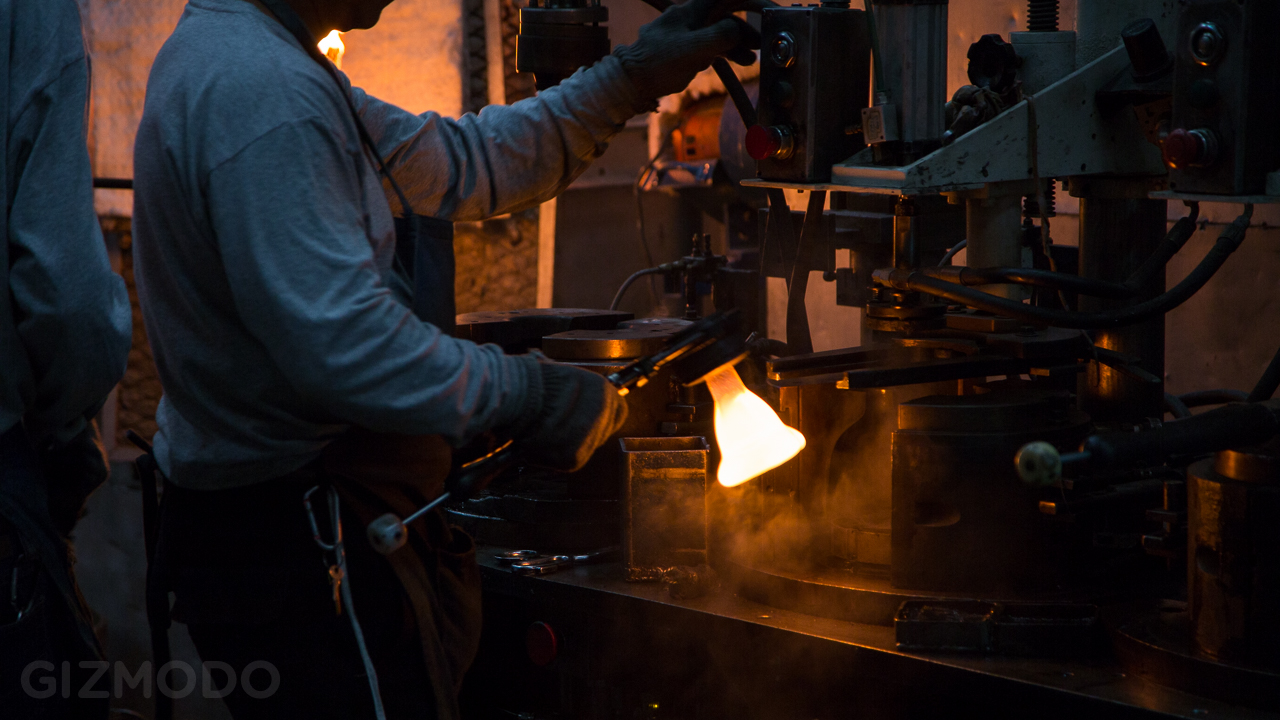When Patrón invited me to their distillery in Mexico last month, I was hesitant. I didn’t think I’d see anything new. I’d heard the company talk up its centuries-old “tahona” method of production, but wrote it off as yet another brand trying to get in on the craft distilling trend. But I agreed to go anyway. Because tequila.
Turns out I was wrong. There’s actually a difference you can taste. And it’s a pretty tasty difference, too.
It’s the weekend, you’ve made it through the long week, and it’s time for Happy Hour, Gizmodo’s weekly booze etc. column. A cocktail shaker full of innovation, science, and substances. Not booze on the rocks. Rock’s on the booze.
What Is the Tahona Process?

The tahona method is basically the way tequila used to be made way back when, though it’s not all that dissimilar from how it’s made today. (Note: If you want our primer on how tequila is made or how mescal is made, these links may serve you better. This article is about a more specific tahona process.)
Blue agave is grown for about seven or so years until it’s ripe. Then jimadores cut the plant off and trim off all the leaves. Then it goes into a brick oven where it’s slowly cooked (about 79 hours) to bring out the sugars. So far, this is similar to the way most high-end distilleries do it now.
What’s different is what happens after roasting. In modern tequila distilleries, the roasted agave hearts go into a electric roller mill where the agave is shredded so that the juice can be extracted. That juice is then strained and it goes into wooden fermenting vats, and then onto distilling pots.

With the tahona process, there is no roller mill. There’s a stone. It’s a big-arse wheel made of volcanic rock. The cooked agave hearts go into a circular pit, and this wheel slowly circles around the perimeter, crushing the juice out of the agave. Once upon a time the wheel was driven by a donkey, but now they have motors that slowly rotate it.
Workers stand near each pit, using long rakes to shift the agave around to ensure that it all gets juiced evenly. So yeah, this was cool-looking, but I was still kind of like, so what? I just didn’t see how the agave being crushed by a stone instead of a mill would make any real difference in the flavour of the final product. And honestly, I’m still not so sure.

Where I think the difference in flavour comes from is the next step. While tequila is normally strained before going to the fermenting vats, the tahona tequila goes into the vats with all of the agave fibre and pulp. It’s a lot of plant material, floating up at the top. That fibre goes one step further even, and goes all the way into the pots for the first round of distilling. It’s then removed for the second and third times through the still.
So what’s the point? The plant solids have additional chemicals in them that don’t come out in the juice alone. When they are allowed to sit in the juice as it ferments, and then cook with it in the still, those compounds come out a little more, and that impacts the flavour of the final product.
What It Means for Patrón

There aren’t a lot of distilleries that use the tahona process anymore. It’s just a less efficient means of extraction, which means less juice, which means less tequila, which means less money.
Recently Patrón introduced its Roca line, which is tequila made exclusively though the tahona process and you can actually taste the difference (much to my surprise). The Roca tequila has an earthier flavour. It tastes a little grassier, a little sweeter, and a bit more rich. Essentially, it tastes more like the agave that it came from. Whether or not it’s better is subjective, but I liked it.
What’s interesting is that Patrón has released the Roca line at a slightly higher proof than their standard tequila, claiming that the additional alcohol by volume helped carry the flavour. Again, I was sceptical here, but it turned out to be true. I tasted the Roca Patrón Silver (the unaged spirit) at both 55 per cent ABV, which is how it comes off the still, and also watered down to a more standard 40 per cent ABV. There was undeniably more sweetness and more agave flavour in the higher proof version. Patron Roca Silver is bottled at 45 per cent ABV to get some of that extra flavour in there.
While tahona Roca line is new, what surprised me is that all Patrón tequilas have tahona tequila in it. For your standard Patrón, the distillery uses tequila made with the tahona method as well as tequila made from the modern roller-mill process I mentioned above. Once both tequilas have gone through the distilling process they are blended together before being bottled.
Patrón also makes a limited edition (read: not cheap) tequila which, like the Roca line, is made entirely from the tahona process. It’s called Gran Patrón Piedra and it’s pretty special. The difference is that this is an extra añejo. It’s aged for at least three years in new American and French oak barrels. I tried it while I was down there and it’s damn good. It’s quite woody and definitely fairly tannic.
It kind of tastes like tequila and whisky had a baby, which is a beautiful thing. It goes for around $US370 a bottle in the US, though, which I just can’t see myself ever shelling out for. A glass of it in a bar on a special occasion, though, definitely.
Got to Bag It Up

When the tequila is aged (or not) and all ready, it gets bottled right there at the distillery. It’s a mix of automatic machinery and a ton of people inspecting the bottles at every step.
I also got to see where Paton’s bottles are made. It’s still largely done by hand in their bottle plant in Guadaljara. As someone who’s always been fascinated with glass blowing, it was dreamy. It was also hotter than hell.
Anyway, so now you know all about the tahona process. To be honest, I’m not fully converted and it’s not my new favourite spirit, but I appreciated the difference. As someone who likes to keep sipping tequilas around, the Roca line adds a nice new flavour to my collection, and I wouldn’t hesitate to tell anyone to try them and see what they think.
Of the three — the silver, the reposado, and the añejo — the reposado is my favourite. It’s aged just long enough to mellow it and get some of the sweet wood flavours, but not so long that the wood starts to dominate, like in the añejo. Your mileage may vary. If you’ve tried them please tell us what you thought in the discussion below.
[Patrón]
